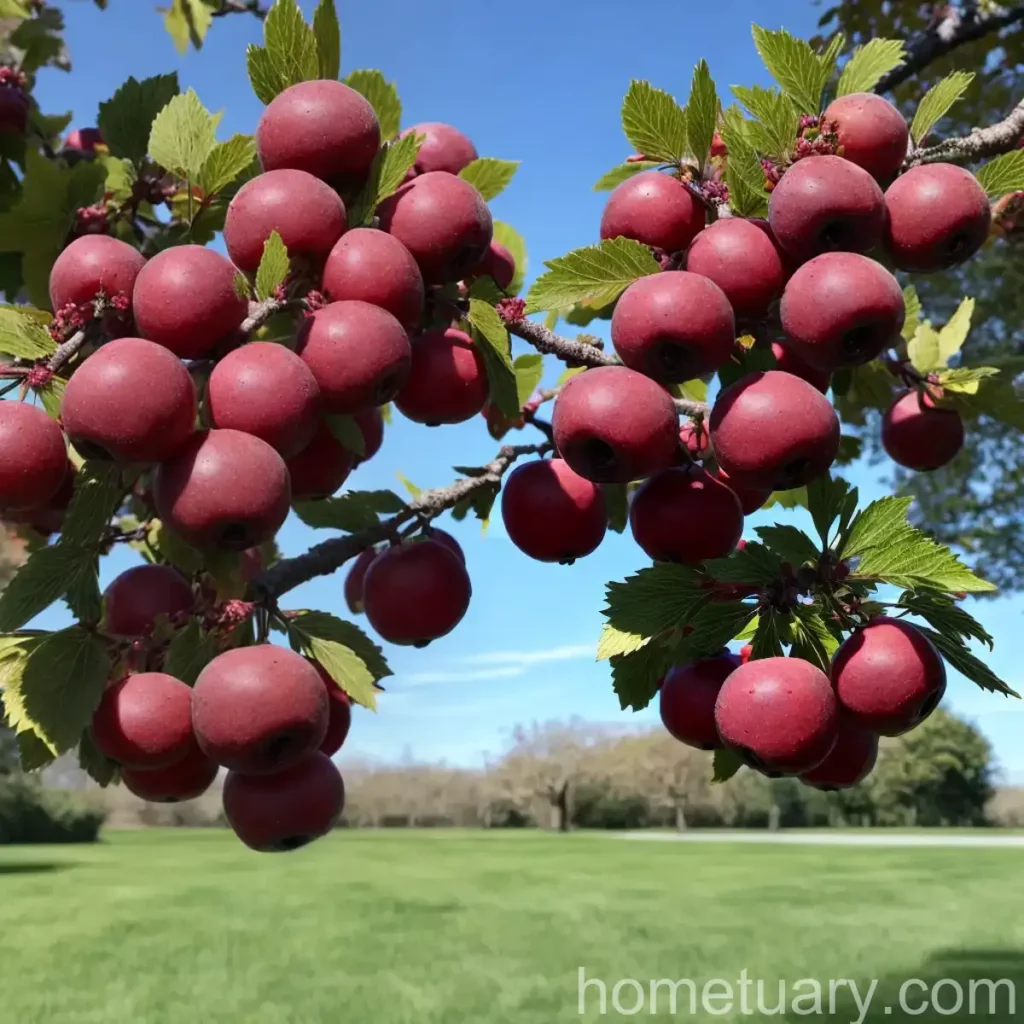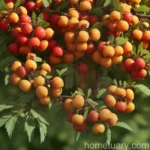The Fascinating Washington Hawthorn (Crataegus phaenopyrum)
The world of plants is a vast and fascinating one, offering an incredible diversity of species, each with its unique characteristics and benefits. Among them, the Washington hawthorn (Crataegus phaenopyrum) stands out as a captivating and valuable plant with a rich history and a range of uses. In this comprehensive guide, we will explore the various aspects of the Washington hawthorn, from its cultural requirements to its ecological significance, and everything in between.
What is the Washington Hawthorn (Crataegus phaenopyrum)?
The Washington hawthorn, scientifically known as Crataegus phaenopyrum, is a deciduous tree belonging to the genus Crataegus within the Rosaceae family. This tree is also commonly referred to as the Washington hawthorn, and it is native to the southeastern United States. The species is renowned for its ornamental value, featuring clusters of white flowers, vibrant autumn foliage, and bright red fruits. In addition to its aesthetic appeal, the Washington hawthorn holds ecological importance as it serves as a valuable food and shelter source for wildlife.
Key Takeaways – Washington Hawthorn (Crataegus phaenopyrum)
Before delving into the various aspects of the Washington hawthorn, let us commence this comprehensive guide by summarizing the key takeaways about this remarkable plant:
- Botanical Name: Crataegus phaenopyrum
- Common Name: Washington hawthorn
- Family: Rosaceae
- Native Habitat: Southeastern United States
- Key Features: White flowers, red fruits, vibrant autumn foliage
- Uses: Ornamental, wildlife food source, ecological benefits
Now that we have established a foundational understanding of this intriguing plant, let’s explore the cultural requirements, uses, and ecological significance of the Washington hawthorn in greater detail.
Culture
The successful cultivation of the Washington hawthorn relies on understanding and meeting its specific cultural requirements, including water, sunlight, fertilizer, soil, pruning, and propagation.
Water
The Washington hawthorn generally prefers well-drained soil and exhibits good tolerance to both drought conditions and occasional flooding. During its establishment phase, regular watering is necessary to promote root development and overall growth. Once established, the plant can tolerate periods of reduced irrigation, making it a suitable choice for regions with fluctuating water availability.
Sunlight
This species thrives in full sun to partial shade, with a preference for at least six hours of direct sunlight per day. Adequate sunlight exposure ensures vigorous growth, abundant flowering, and a profusion of vibrant foliage.
Fertilizer
Fertilization is not usually required for mature Washington hawthorn trees, particularly if they are growing in nutrient-rich soil. However, for young or underperforming trees, a balanced fertilizer application in early spring can bolster their growth and overall health.
Soil
The Washington hawthorn demonstrates adaptability to a wide range of soil types, including clay, loam, and sandy soils. However, it thrives in well-drained, moderately fertile soils with a slightly acidic to neutral pH.
Pruning
Regular pruning is beneficial for shaping the tree, removing dead or diseased wood, and promoting optimal branching structure. Pruning is typically conducted during the dormant season to minimize stress on the tree and prevent excessive sap flow.
Propagation
Propagation of the Washington hawthorn can be achieved through various methods, including seed germination, softwood cuttings, and grafting. Each method has its advantages and challenges, and the selection of the propagation technique depends on the desired outcomes and available resources.
Uses
The Washington hawthorn holds diverse uses, ranging from its ornamental value to its ecological contributions and potential medicinal properties.
Ornamental Value
With its elegant white blossoms, vibrant foliage, and showy red fruits, the Washington hawthorn is widely prized as an ornamental tree in landscaping and horticulture. Its dense, thorny branches and attractive appearance make it a superb choice for home gardens, public parks, and urban green spaces.
Wildlife Food Source
The berries of the Washington hawthorn are a vital food source for a variety of bird species, including thrushes, cedar waxwings, and robins. These fruits provide essential nutrition for wildlife, contributing to the overall biodiversity and ecological balance of natural habitats.
Potential Medicinal Properties
In traditional herbal medicine, various parts of the Washington hawthorn, including its berries and leaves, have been used to support cardiovascular health and overall well-being. The plant is rich in bioactive compounds, such as flavonoids and oligomeric proanthocyanidins, which may confer potential health benefits.
Water
The Washington hawthorn generally prefers well-drained soil and exhibits good tolerance to both drought conditions and occasional flooding. During its establishment phase, regular watering is necessary to promote root development and overall growth. Once established, the plant can tolerate periods of reduced irrigation, making it a suitable choice for regions with fluctuating water availability.
Sunlight
This species thrives in full sun to partial shade, with a preference for at least six hours of direct sunlight per day. Adequate sunlight exposure ensures vigorous growth, abundant flowering, and a profusion of vibrant foliage.
Fertilizer
Fertilization is not usually required for mature Washington hawthorn trees, particularly if they are growing in nutrient-rich soil. However, for young or underperforming trees, a balanced fertilizer application in early spring can bolster their growth and overall health.
Soil
The Washington hawthorn demonstrates adaptability to a wide range of soil types, including clay, loam, and sandy soils. However, it thrives in well-drained, moderately fertile soils with a slightly acidic to neutral pH.
Pruning
Regular pruning is beneficial for shaping the tree, removing dead or diseased wood, and promoting optimal branching structure. Pruning is typically conducted during the dormant season to minimize stress on the tree and prevent excessive sap flow.
Propagation
Propagation of the Washington hawthorn can be achieved through various methods, including seed germination, softwood cuttings, and grafting. Each method has its advantages and challenges, and the selection of the propagation technique depends on the desired outcomes and available resources.
Container Popularity
Washington hawthorn trees are also cultivated in containers, offering a splendid ornamental accent for patios, balconies, and small gardens. Container-grown specimens require regular watering to maintain adequate soil moisture, and they benefit from occasional fertilization to support their growth and flowering.
Common Diseases
Like many plants, the Washington hawthorn is susceptible to certain diseases, including fungal infections and rust diseases. Being vigilant about the early signs of diseases and promptly addressing any issues can help maintain the tree’s health and reduce the impact of potential pathogens.
Disease Diagnosis
When inspecting a Washington hawthorn tree for potential diseases, it is important to look for symptoms such as leaf spots, powdery mildew, or abnormal leaf discoloration. Additionally, the presence of cankers or lesions on the trunk and branches may indicate a more serious disease that requires immediate attention.
Common Pests
Pests that may affect the Washington hawthorn include aphids, scale insects, and spider mites, among others. Regular monitoring and appropriate pest management strategies can help minimize the impact of these pests and preserve the tree’s vitality.
Botanist’s Tips
- Regularly monitor the tree for signs of diseases and pests, and take proactive measures to address any issues promptly.
- Provide adequate watering during dry periods to support the tree’s resilience and overall health.
- Prune the tree thoughtfully, promoting good air circulation and optimal light penetration within the canopy.
Fun Facts
- The fruits of the Washington hawthorn are edible and can be used to make jellies, jams, and flavored beverages.
- The tree’s dense foliage and thorny branches make it an excellent choice for creating natural barriers and hedgerows.
- The vibrant red fruits of the Washington hawthorn are highly attractive to birds, contributing to the tree’s ecological significance as a wildlife food source.
Links to External Resources
For additional information and resources on the Washington hawthorn, consider exploring the following links:
- Grow Washington Hawthorn
- Crataegus phaenopyrum: FIRE REGIME SPECIFICITY
- Washington Hawthorn Information and Resources
In conclusion, the Washington hawthorn (Crataegus phaenopyrum) is a remarkable plant with a myriad of attributes, from its ornamental allure to its ecological contributions and potential medicinal uses. By understanding its cultural requirements, ecological significance, and potential uses, we can appreciate and harness the diverse benefits of this captivating species. Whether gracing a garden landscape or providing sustenance for wildlife, the Washington hawthorn undoubtedly leaves a lasting impression and serves as a testament to the remarkable diversity of the plant kingdom.















